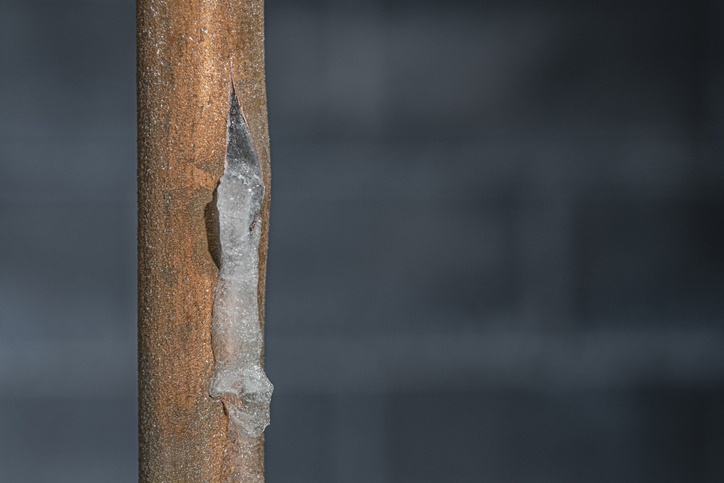
How to protect your church facilities against freezing pipes, water infiltration, and more

ARM, AIS
Vice President, Risk Management Services
Philadelphia Insurance Companies (PHLY)
Church Executive: Tell me about the inclement-weather risks churches most commonly face.
Andrew Shockey: Right off the bat, I’m thinking of pipe freezes, water infiltration — even the snow loads on roofs. Typically, all of this is exacerbated by deferred maintenance of the building by the congregation. But you’re also seeing more extreme conditions from Mother Nature, with higher and lower temperatures, increased wind speeds, and more. Most recently, Winter Storm Elliott provided a reminder that our infrastructure needs to be better prepared and better equipped for the more extreme weather conditions we’re facing.
CE: When we think about these risks, what are some tried-and-true prevention strategies you and your team would recommend?
Shockey: It’s not too late to think ahead by checking the vulnerable and critical points of your building’s infrastructure. Our clients know their buildings best; that’s where complacency can come in. Even just for spotting signs of deterioration, it’s worth doing regular walk-throughs — something that’s very simple and practical.
And while it might sound too simple, I suggest walking the building in a different order than your regular routine. Go to your office using the back door, for example, and you’d be amazed at how you can see your building differently just by varying your path of travel.
Look for simple signs of deterioration. That’s something I don’t think we can overlook. I certainly don’t want to be an alarmist, but the lesson we took away from last year is that we need to do better by starting early. Start now, before we’re under a warning from the National Weather Service; then it’s too late.

Spray foam is amazing for sealing cracks. Another simple step is to contact your local utility provider to find out if you’re eligible for a free energy assessment. See if somebody might be willing to come out and check your doors, windows and other building openings to see if there might be significant leaks. If so, they could be very efficiently solved.
A lot of times, people think too ‘big picture.’ While that’s not entirely wrong, there’s still a lot you can do if you don’t have the capital available right now for a brand-new roof. That’s where I want people to think beyond, I can’t do the big things, so I’m not going to do anything.
There are a lot of simple, practical things you can do now, in advance, that put you in a much better position for whatever’s coming at us in the upcoming winters.
CE: What roles can the PHLYSENSE sensor system play in helping protect church property against inclement weather?
Shockey: This technology provides an incredibly efficient extension of care for a church building by providing temperature alerts before something gets to the critical point of freezing and then breaking. The simple reality is that most of these buildings aren’t fully occupied (or at all) during the week, so this is a very helpful extension of care for the trustees who are charged with facilities care.
Let’s say the youth group leaves a window open in an upstairs classroom. With a sensor in place, a trustee will be alerted: Why, all of a sudden, is the temperature inside the building at 45 degrees? Something is going on; I need to go check it out. These alerts can be sent to multiple people.
Obviously, closing the window will go a long way in preventing a much more devastating set of circumstances. Scenarios like this are why Philadelphia Insurance Companies has chosen to invest in this type of technology.
The other way PHLYSENSE can help is by detecting the presence of water. Again, our policyholders know their buildings the best. Often, they’ll place sensors in places where they’d least appreciate the presence of water — near the organ, for instance, or the basketball court.
Or maybe it’s an area where they know the space is prone to water infiltration and the bigger fix is still months or years away from being financially viable. This technology can help in those circumstances, too.
We don’t know how severe this coming winter is going to be, but the sensor technology has improved since last winter. That’s where I have hope that we can be better prepared for the next version of Winter Storm Elliott, should that happen this year.
CE: Is there anything else that we haven’t discussed but that you feel is important to include?
Shockey: I want to reiterate that it’s time to prepare now. And let’s not overlook the simple act of making sure that doors and windows are actually closing and sealing as they’re intended to, now. Those openings are any building’s most vulnerable points. If door jambs adjust with temperature changes, doors can stick or not fully close, and then you have a direct hole into the building. These are the kinds of things to check off the list now.
— Reporting by RaeAnn Slaybaugh


